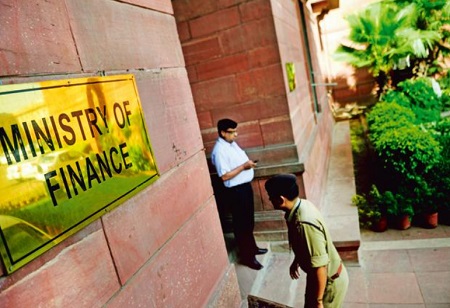India's external debt of $620bn is sustainable: Finance Ministry report
By Consultants Review Team
 India's external debt of $620.7 billion, as at end of March 2022, is sustainable and is being managed in a prudent manner, the Department of Economic Affairs, under the Union Finance Ministry, said.
India's external debt of $620.7 billion, as at end of March 2022, is sustainable and is being managed in a prudent manner, the Department of Economic Affairs, under the Union Finance Ministry, said.
In a recent report, the Department of Economic Affairs said the country's external debt continues to be sustainable and prudently managed.
"As at end-March 2022, it stood at $620.7 billion, growing by 8.2 per cent over the level a year ago. External debt as a ratio to GDP (gross domestic product) was 19.9 per cent, while reserves to external debt ratio was 97.8 per cent," the report said.
The sovereign debt at $130.7 billion rose higher by 17.1 per cent over its level a year ago, mainly because of additional allocation of special drawing rights (SDR) by the IMF during 2021-22.
The non-sovereign debt, on the other hand, grew 6.1 per cent to $490 billion over the level as at end-March 2021.
Experts had said that the external debt of $620.7 billion need not be a concern as $490 billion is non-government and the share of government is only $130.8 billion.
Of the non-government debt, the share of non-financial corporations was about $250.2 billion.
Further, the total debt of $620.7 billion as a percentage of gross domestic product (GDP) was 19.9 per cent and the debt service ratio was 5.2 per cent.
Experts also said India cannot be compared with Sri Lanka that is in a severe economic crisis.
The share of the central government in short term debt - maturing in a year's time- is only $7.7 billion out of the total $267 billion, experts had said.
Commercial borrowings, NRI deposits, and short-term trade credit are the three biggest constituents of the non-sovereign debt, accounting for as much as 95.2 per cent.
While NRI deposits declined by two per cent to $139 billion, commercial borrowings at $209.71 billion and short-term trade credit at $117.4 billion rose by 5.7 per cent and 20.5 per cent, respectively.
According to the report, the debt vulnerability indicators continued to be benign. The debt service ratio fell significantly to 5.2 per cent during 2021-22 from 8.2 per cent during the previous year, reflecting buoyant current receipts and moderating external debt service payments.
The debt service payment obligations arising out of the stock of external debt as at end of March 2022 are projected to trend downwards over the coming years.
From a cross-country perspective, India's external debt is modest. In terms of various debt vulnerability indicators, India's sustainability was better than the Low-and Middle-Income Countries (LMICs) as a group and vis-a-vis many of them individually.
According to the report, the US dollar continues to be the leading currency of denomination accounting for 53.2 per cent of the total as at end March 2022.
Deposits in Non Resident (External) Rupee Accounts (NR(E)RA), NRO accounts and FPI investments in Gsec and corporate bonds are among the components of India's external debt, denominated in Indian rupees.
Indian rupee is the second leading currency of denomination with a lower share of 31.2 per cent of the total as at end-March 2022 than 33.3 per cent a year ago, reflecting erosion of outstanding FPI investments in G-Sec and corporate bonds ($50.1 billion from $51.4 billion as at end-March 2021) and balances under NRE accounts ($100.8 billion from $ 102.6 billion). Following the US dollar and the Indian rupee are the SDRs (6.6 per cent), the Japanese Yen (5.4 per cent) and Euro (2.9 per cent).




